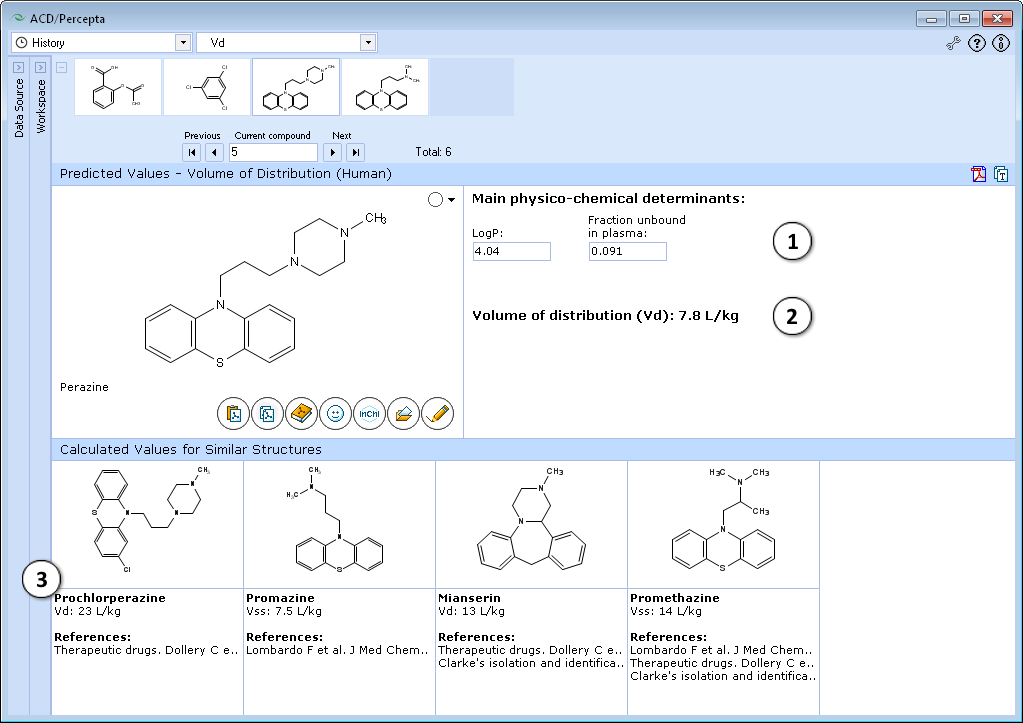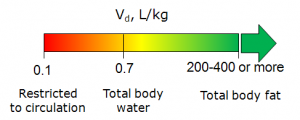Vd: Difference between revisions
Jump to navigation
Jump to search
| Line 15: | Line 15: | ||
<br /> | <br /> | ||
# Calculated apparent volume of distribution of a compound:<br>[[File: | # Calculated apparent volume of distribution of a compound:<br>[[File:Distribution_vd_scale.png|300px]] | ||
# A general estimate of likely volume of distribution for compounds of this type, based on chemical structure and physicochemical properties | # A general estimate of likely volume of distribution for compounds of this type, based on chemical structure and physicochemical properties | ||
# Up to 5 similar structures in the training set with experimental quantitative values of apparent volume of distribution and literature references | # Up to 5 similar structures in the training set with experimental quantitative values of apparent volume of distribution and literature references | ||
Revision as of 13:16, 29 May 2012
Overview
This module contains a predictive algorithm that generates a quantitative estimate of the apparent Volume of Distribution (Vd) of a compound. Physicochemical parameters, charge state, lipophilicity and hydrogen bonding capacity are automatically computed and used as inputs to the predictive model of the volume of distribution.
Features
- Calculates the extent of tissue binding of candidate compounds expressed as Vd values and displays a comment regarding the effect of physicochemical properties (LogP and ionization) on drug distribution in the body.
- Experimentally measured volume of distribution is displayed for up to 5 similar structures from the training set along with the corresponding literature references.
Interface

- Calculated apparent volume of distribution of a compound:

- A general estimate of likely volume of distribution for compounds of this type, based on chemical structure and physicochemical properties
- Up to 5 similar structures in the training set with experimental quantitative values of apparent volume of distribution and literature references
Technical information